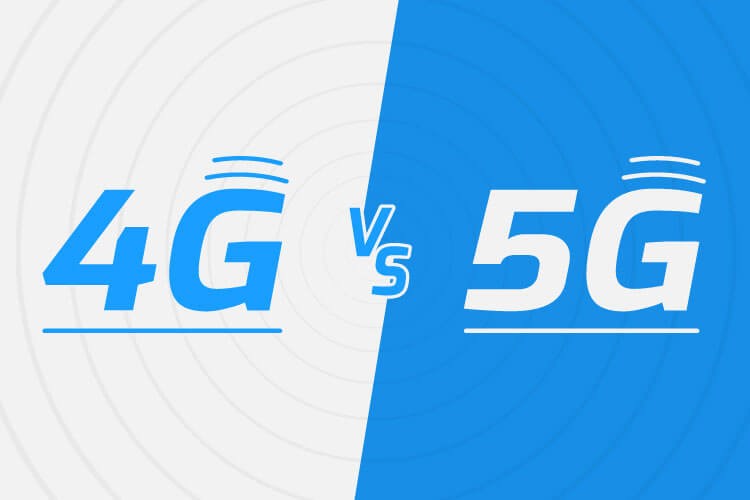Introduction
The next evolution in networking technology is 5G after the launch of 3G and 4G in the last decade. Telecom providers are in the continuous race to facilitate 5G networks on a wider range and deliver the best mobile network experience to their users. But how much upgrade is needed on its subsequent version? In answer to this, 5G is a massive upgrade to 4G that is quite faster, with huge capacity and new use cases to support various industries.
Differences between 5G and 4G
· Latency – Ultra-Reliable Low-Latency Communication (URLLC) is the 5G standard for low latency. With 5G giving real-time response due to ultra-low latency, telecom providers can offer their customers with video streaming, calling services, etc. Moreover, immediate response in a fraction of seconds makes it ideal for critical applications in sectors like healthcare, automobile, etc.
· Speed – High-band spectrum in 5G makes it possible to deliver high speed than its previous generation networks like 4G. Theoretically, 4G speed test delivered a peak speed of 1GB/sec for 4G LTE based connection whereas 5G speed test revealed the speed up to 20 times faster than the 4G i.e. upto 20GB/sec.
· Bandwidth – 5G has higher bandwidth when benchmarked with 4G allowing a large amount of data flow in a single time and limiting congestion that used to cause in previous networks when multiple devices were connected on the mobile network.
· Architecture – In-built with Radio Access Networks (RAN), 5G is considered to be more intelligent than 4G and can take advantage of a cloud-based server. Network service providers and enterprises will be able to set up their own core centralized networks. Moreover, localized data centers can be a great advantage for service providers to provide a reliable and fast Internet connection to subscribers.
· Device Intelligence – One of the most attractive features of 5G is that it can differentiate between fixed and mobile devices. The cognitive radio approach assists in the identification of each device and offers the most appropriate channel for network delivery. With this, each user will get a customized version of Internet connection depending upon the capability of their device and local reception surroundings.
Speed and Latency are the key differentiators
One of the key idea behind 5G development was to expand the width of the channels leading to a rise in the overall potential speed of the mobile network. The width of an individual channel plays a great role in transforming the speed of the network. The more the thickness of the channel, the more data can flow through it. 5G technology is far more advanced than its predecessor 4G technology as it unveils more wireless frequencies (spectrum bands) that is used between mmWave (millimeter wave) and 5G NR (New Radio), generating new use cases. For instance, 5G NR based new carrier frequencies when combined with the wide millimeter-wave channels permit to design a high-speed train multi-gigabit wireless network.
Compared to 4G’s latency as 50 milliseconds, 5G offers latency at 1 millisecond theoretically and is 21-26 milliseconds in real-world situations as measured by Ookla in December 2019. This low latency feature has unlocked new use cases to transform businesses and industries. A case in example would be new-age multiplayer gaming experience with zero lag due to reduced latency, providing excellent and immersive experiences to mobile users.
When will 5G be available on a large-scale?
5G is now becoming a reality and telecom providers are leaving no stones unturned to scale up the deployment of 5G across the globe. However, as they proceed with the rollout of 5G, network performance tests of the cell tower site, are very critical before making it available for the commercial users. Site verification can be performed via walk testing or identification of suitable area with drive test and assess 5G drive test KPI like network coverage, speed test, call test, etc. paving the way for network testing before proceeding with the network setup in a particular area.
5G rollout has been the top priority for the telecom operators for some time now. Some of the companies have expanded their 5G services for instance, Vodafone 5G network has been made live in around 45 UK cities and towns. However, the entire process is moving at a slow pace owing to 2020’s current pandemic situation around the world and mass-adoption is generally anticipated around 2022 basically in the US, China, South Korea and Japan where still several countries will be very much close behind.
The future of fast 5G for business and industries
No doubt, 5G is outpacing all the previous networking technologies with its superior qualities in terms of speed, bandwidth and latency. Having said that, it showcases the strength of this new-age technology that is transforming every industry and the need to develop innovative applications that has the capability to change our lives in a more positive way.
Conclusion
The diversity of innovation that is being brought by 5G networks is commendable and different from 4G by a wide margin. Full potential of 5G with respect to speed and latency is yet to be delivered and nationwide coverage still on the progressing phase to be likely years away. Mobile network operators will take a huge leap in the development of the telecommunications industry in the years to come as they are making huge investments in 5G deployment for commercializing it on a large-scale.





